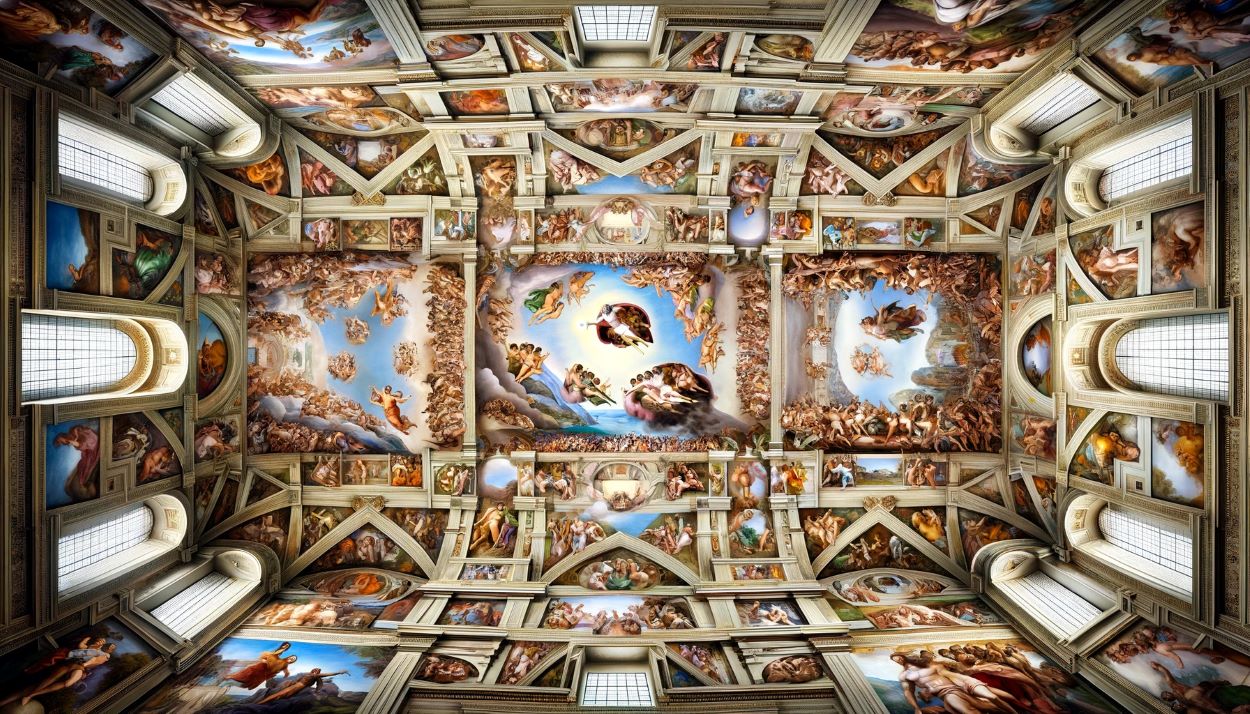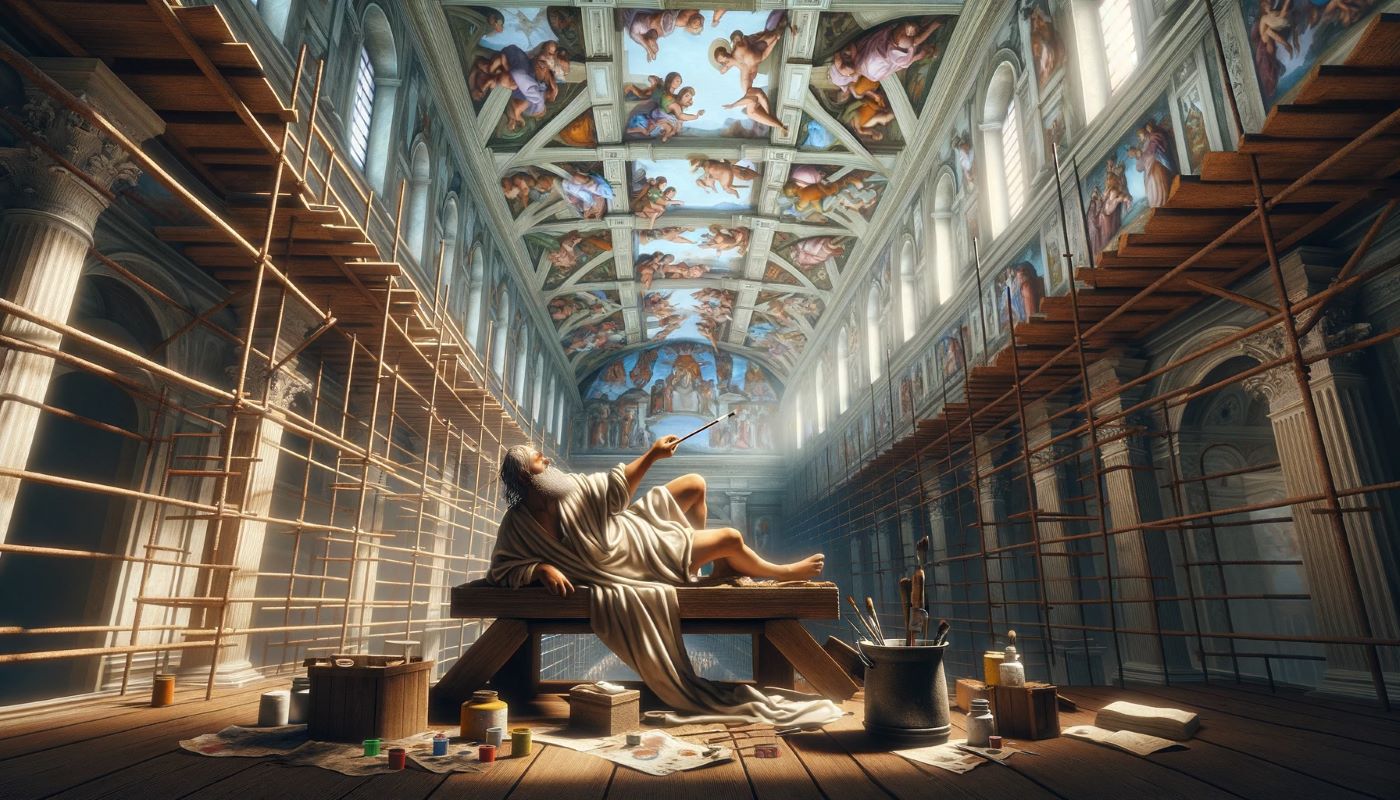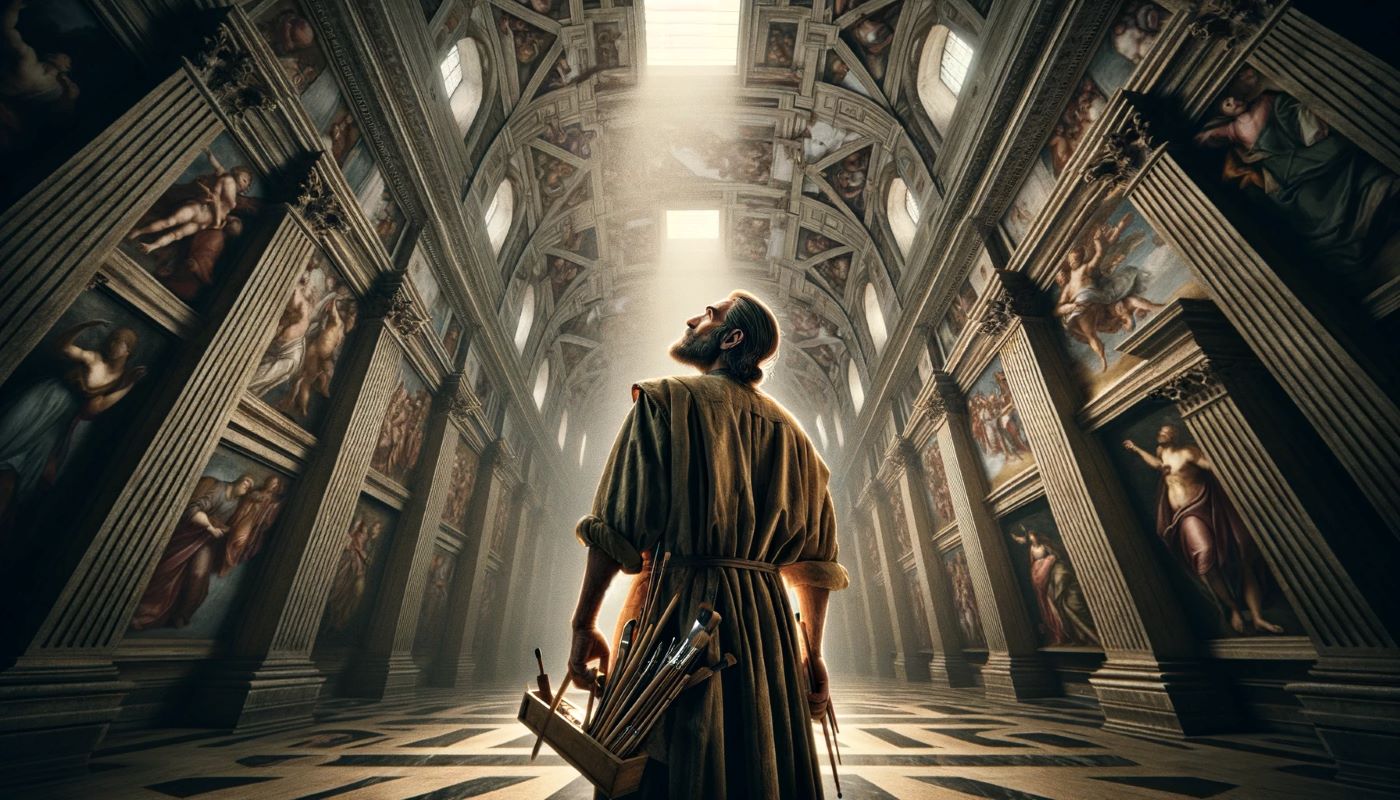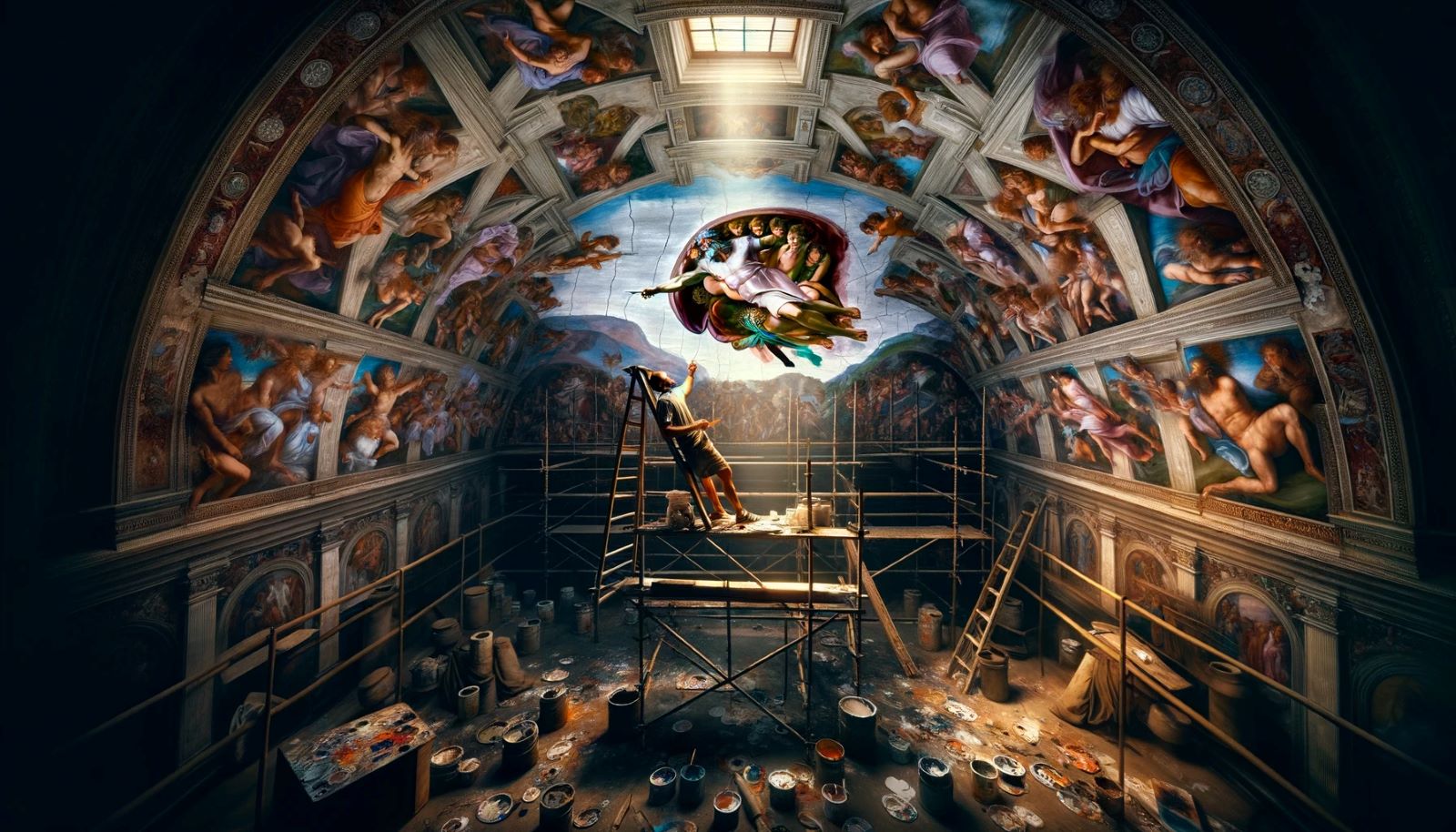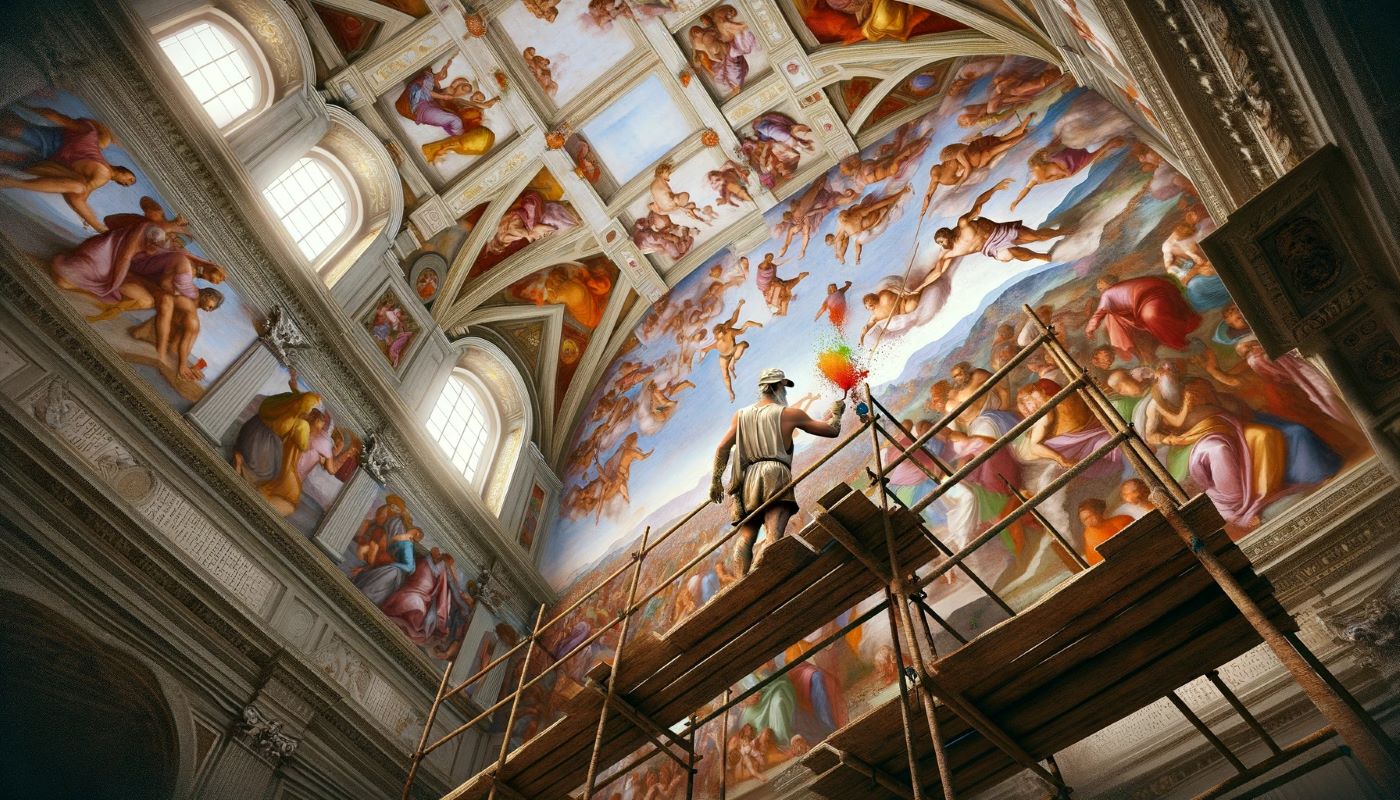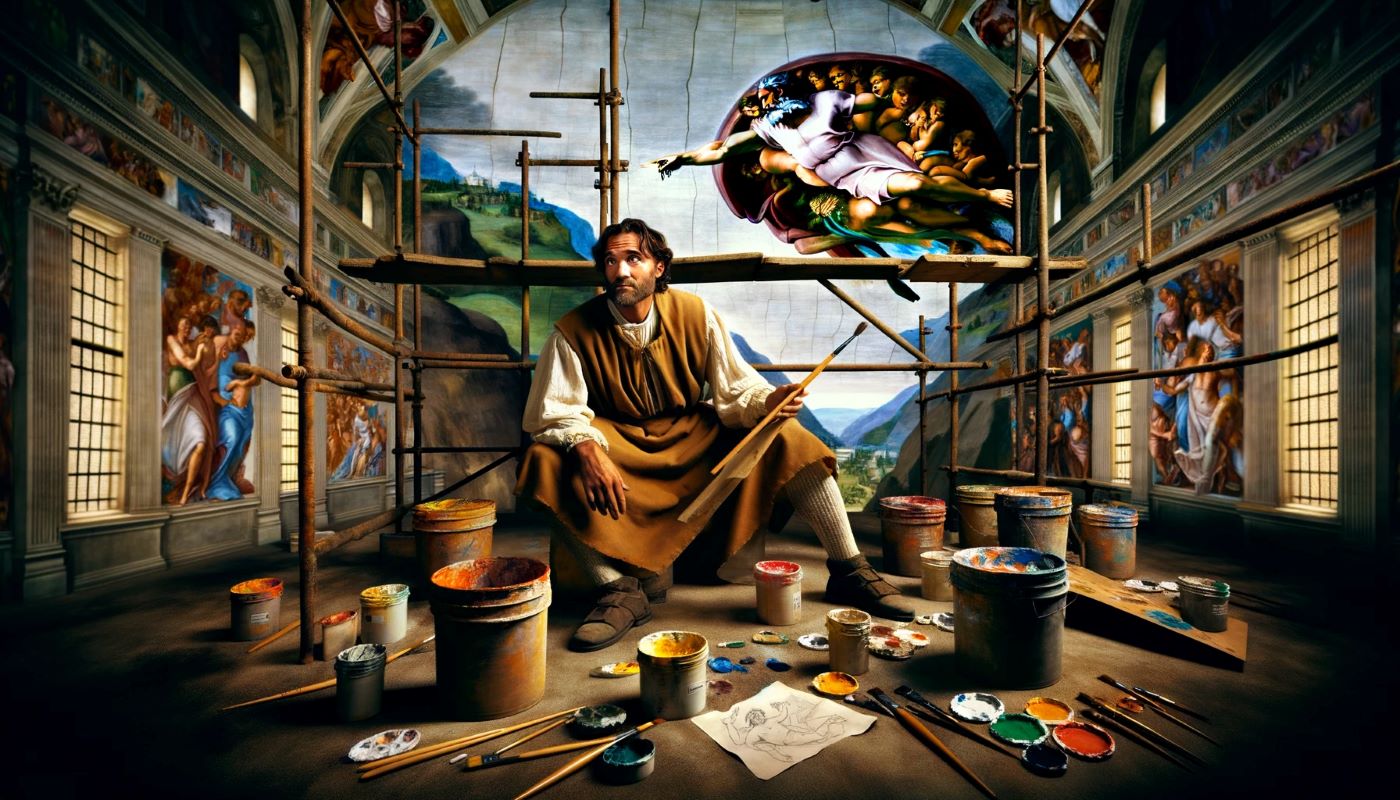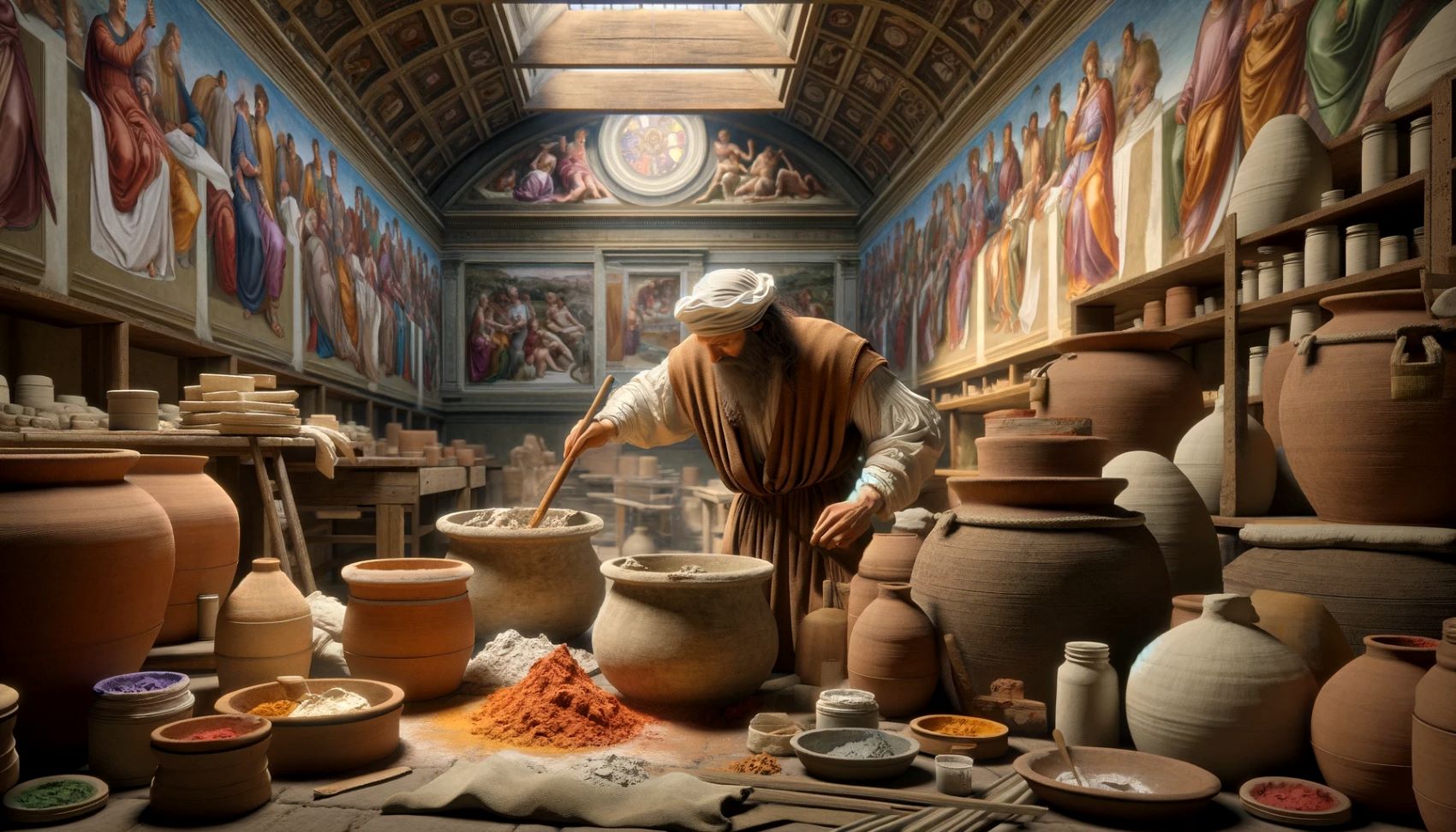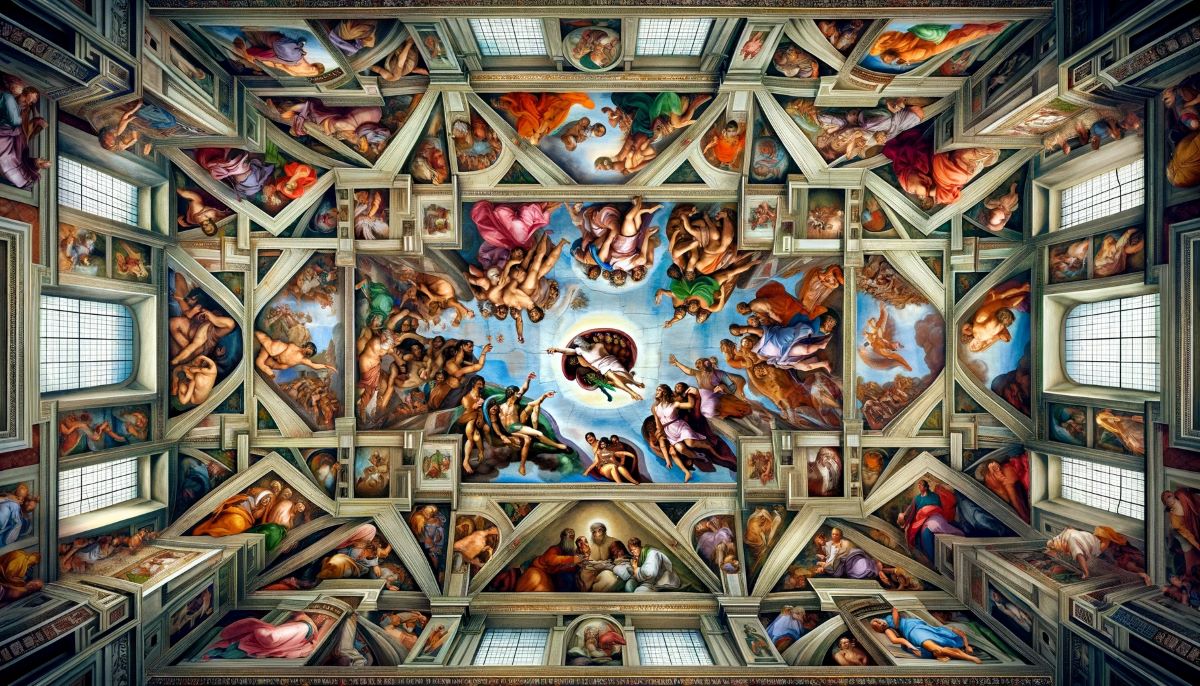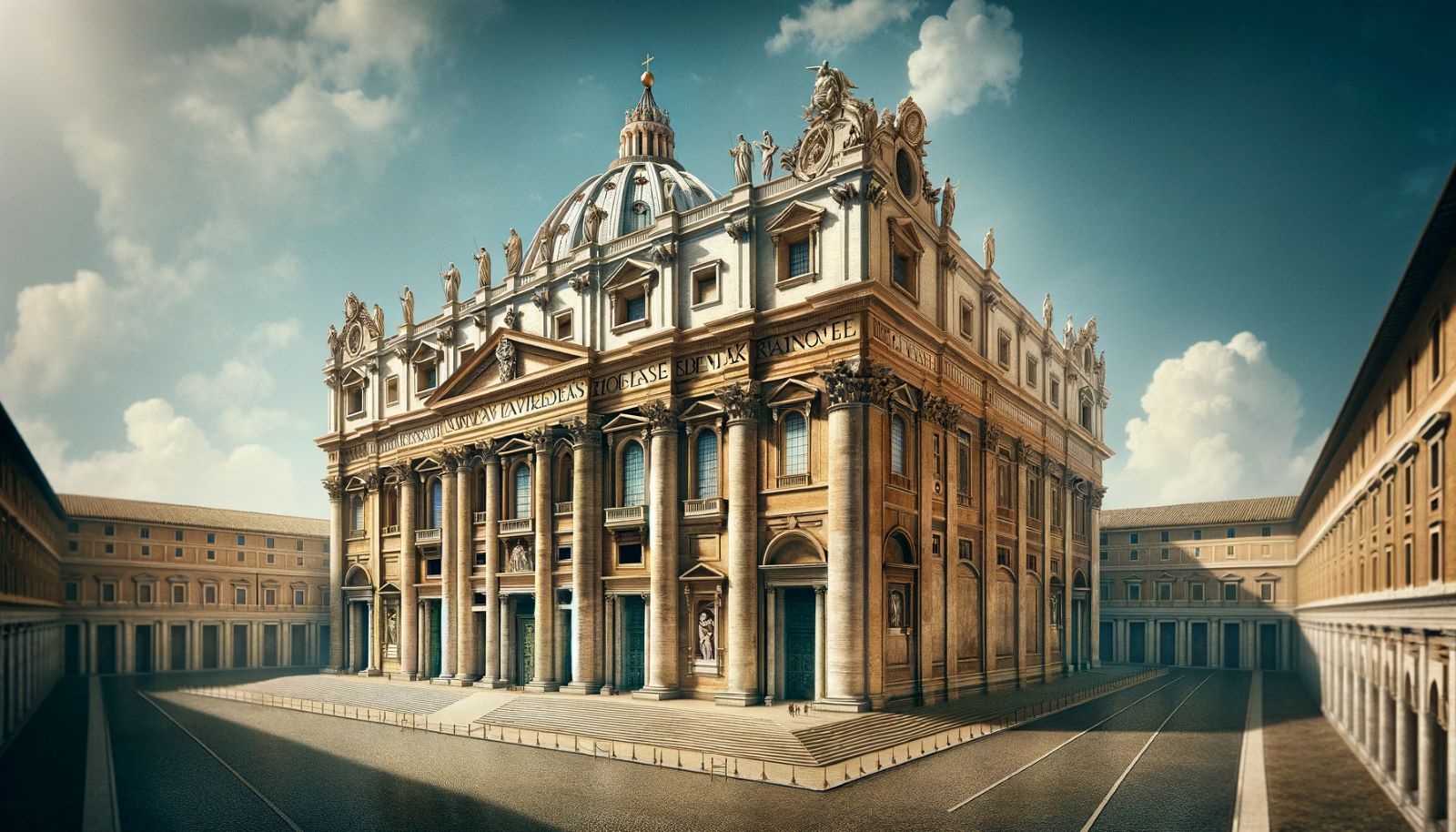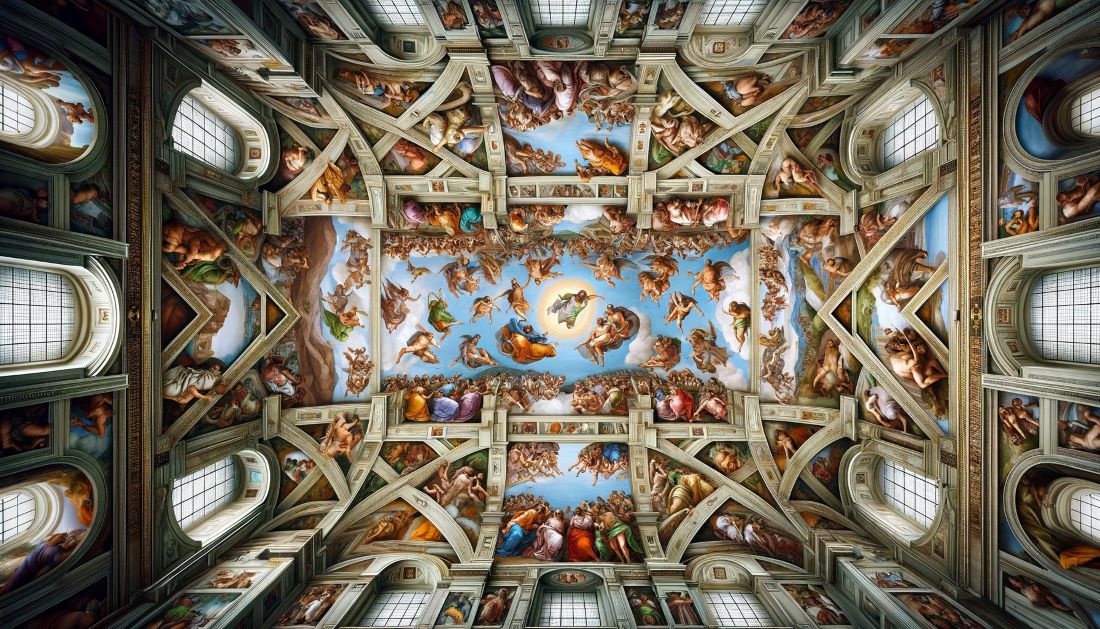Home>Arts and Culture>What Is The Subject Of Michelangelos Painting On The Sistine Chapel Ceiling
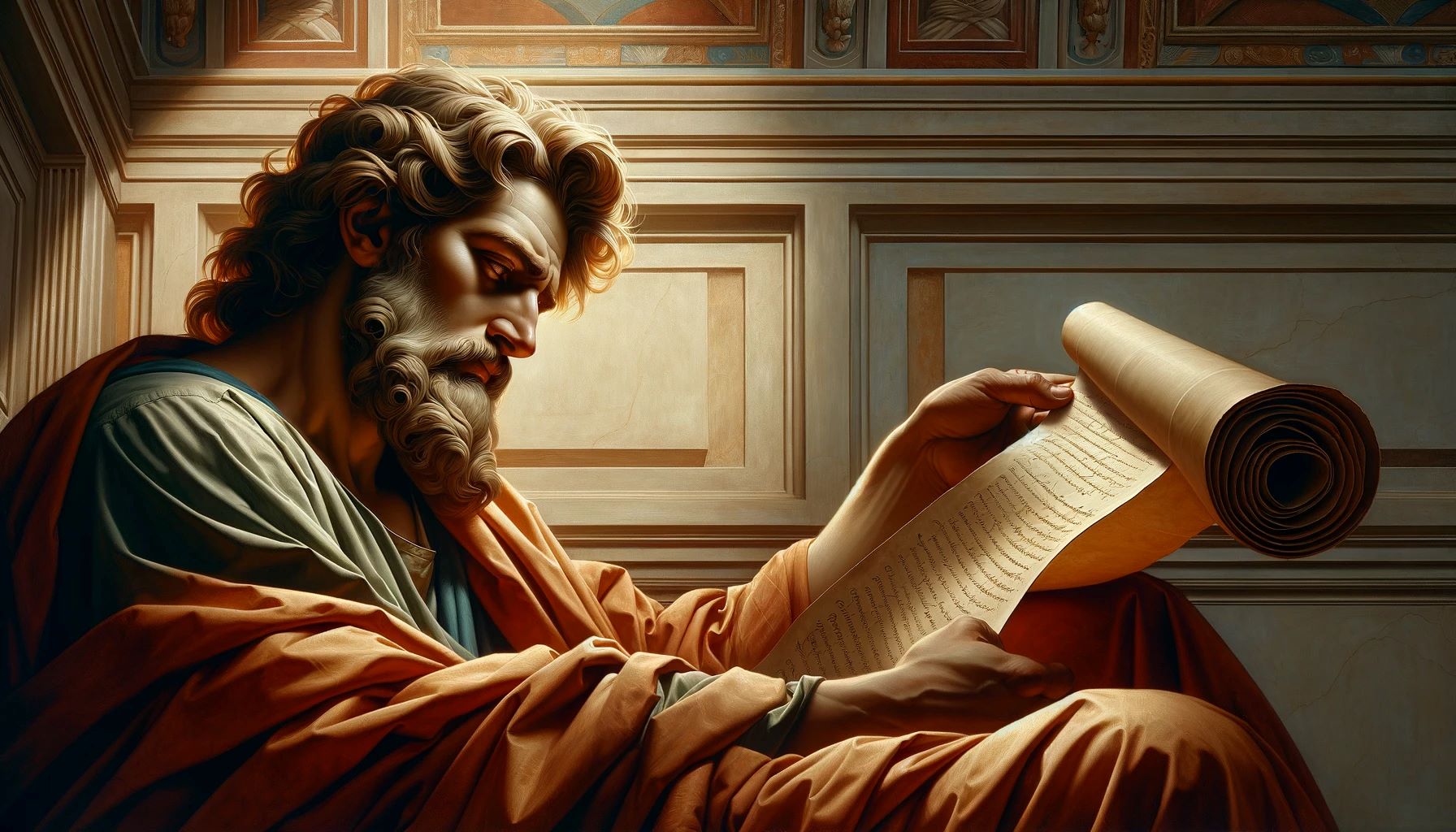

Arts and Culture
What Is The Subject Of Michelangelos Painting On The Sistine Chapel Ceiling
Published: March 4, 2024
Ericka Andersen, an editor at Christian.net, expertly merges digital strategy with content creation, focusing on faith and societal issues. Her communication skills enhance the platform's engaging narratives, fostering meaningful dialogue on belief's impact on society.
Discover the awe-inspiring subject of Michelangelo's iconic Sistine Chapel ceiling painting and its significance in arts and culture. Explore the timeless masterpiece and its historical and artistic impact.
(Many of the links in this article redirect to a specific reviewed product. Your purchase of these products through affiliate links helps to generate commission for Christian.net, at no extra cost. Learn more)
Table of Contents
Introduction
What is the subject of Michelangelo's painting on the Sistine Chapel ceiling? Michelangelo's masterpiece on the Sistine Chapel ceiling is a breathtaking display of artistry and religious significance. This iconic work of art has captivated audiences for centuries, drawing in millions of visitors each year to witness its grandeur. In this article, we will delve into the inspiration behind Michelangelo's creation, the iconic scenes depicted in the painting, the symbolism and meaning behind the artwork, and the lasting impact it has had on art and culture. Let's embark on a journey to unravel the mysteries and beauty of Michelangelo's Sistine Chapel masterpiece.
Michelangelo's Inspiration for the Sistine Chapel Ceiling
-
Divine Commission: Michelangelo's inspiration for the Sistine Chapel ceiling stemmed from a divine commission by Pope Julius II. The pope tasked Michelangelo with the monumental undertaking of adorning the ceiling with frescoes that would glorify the Catholic Church and inspire awe in its worshippers.
-
Spiritual Devotion: Michelangelo's deep-rooted spiritual devotion and reverence for the Christian faith also served as a profound source of inspiration. His unwavering belief in the divine and the sacred narratives of the Bible fueled his creative vision, driving him to depict these stories with unparalleled passion and skill.
-
Artistic Challenge: The challenge of transforming the vast expanse of the chapel's ceiling into a visual masterpiece was a driving force for Michelangelo. His ambition to surpass artistic conventions and create a work of unparalleled grandeur motivated him to push the boundaries of his own creativity and skill.
-
Historical Context: The tumultuous political and religious climate of the time also played a significant role in shaping Michelangelo's inspiration. The Renaissance period, marked by a revival of classical art and humanist ideals, provided a fertile ground for Michelangelo to express his artistic genius and contribute to the cultural and religious landscape of his era.
-
Personal Conviction: Michelangelo's personal conviction to leave a lasting legacy that would transcend time and resonate with future generations was a driving force behind his inspiration for the Sistine Chapel ceiling. His unwavering commitment to excellence and his desire to create a work of enduring significance propelled him to pour his heart and soul into this monumental artistic endeavor.
Michelangelo's inspiration for the Sistine Chapel ceiling was a culmination of divine calling, spiritual devotion, artistic ambition, historical context, and personal conviction, all of which converged to ignite the flames of creativity that gave birth to one of the most awe-inspiring works of art in human history.
The Iconic Scenes Depicted in the Painting
-
The Creation of Adam: One of the most iconic scenes in Michelangelo's Sistine Chapel ceiling painting is the depiction of God reaching out to Adam, as inspired by the Book of Genesis. This powerful portrayal of the creation of humankind encapsulates the divine connection between God and humanity, symbolizing the gift of life and the spiritual bond between the Creator and His creation.
-
The Last Judgment: Another striking scene is the depiction of the Last Judgment on the altar wall of the Sistine Chapel. This awe-inspiring portrayal of the Second Coming of Christ and the final judgment of souls showcases Michelangelo's mastery in capturing the intensity and gravity of this pivotal moment in Christian theology.
-
The Creation of Eve: Michelangelo's rendition of the creation of Eve from Adam's rib is a poignant representation of the biblical account of the first woman's origin. The tenderness and intimacy depicted in this scene convey the profound significance of companionship and the divine union between man and woman.
-
The Deluge: The dramatic portrayal of the Deluge, depicting the Great Flood as described in the Book of Genesis, is a testament to Michelangelo's ability to convey the tumultuous and cataclysmic events of this biblical narrative. The sweeping movement and emotional depth in this scene immerse viewers in the harrowing account of divine judgment and human salvation.
-
The Prophet Jeremiah: Among the numerous prophetic figures depicted on the ceiling, the portrayal of the Prophet Jeremiah stands out for its emotive power and prophetic significance. Michelangelo's masterful depiction of Jeremiah's anguish and contemplation captures the essence of divine revelation and the weight of prophetic responsibility.
-
The Libyan Sibyl: The inclusion of the Libyan Sibyl, a pagan prophetess, alongside biblical figures in the ceiling's composition reflects Michelangelo's artistic prowess in seamlessly integrating classical and Christian themes. This juxtaposition serves as a testament to the artist's ability to harmonize diverse elements within a unified artistic vision.
-
The Ancestors of Christ: The depiction of the Ancestors of Christ, including figures such as Jesse and David, exemplifies Michelangelo's meticulous attention to detail and his reverence for the lineage of Christ. These ancestral figures form a visual testament to the genealogy of Jesus, underscoring the historical and spiritual significance of Christ's earthly lineage.
-
The Ignudi and Cherubim: The inclusion of ignudi (nude male figures) and cherubim amidst the architectural framework of the ceiling showcases Michelangelo's skill in seamlessly blending human form with celestial beings. These ethereal figures add a celestial dimension to the overall composition, elevating the spiritual atmosphere of the sacred space.
Michelangelo's Sistine Chapel ceiling is a tapestry of iconic scenes that collectively narrate the grandeur of creation, the drama of divine judgment, the profundity of prophecy, and the lineage of Christ. Each scene is a testament to Michelangelo's unparalleled artistic vision and his ability to breathe life into timeless biblical narratives through the transcendent power of art.
The Symbolism and Meaning Behind the Artwork
-
Divine Proclamation: The Sistine Chapel ceiling serves as a visual proclamation of the divine narrative, encapsulating the overarching theme of God's redemptive plan for humanity. Through the meticulous portrayal of biblical events, Michelangelo communicates the timeless message of creation, fall, and redemption, inviting viewers to contemplate the profound mysteries of faith and salvation.
-
Spiritual Allegory: The intricate symbolism woven into the artwork conveys profound spiritual allegories, inviting viewers to discern deeper layers of meaning within the visual tapestry. From the juxtaposition of pagan and biblical figures to the harmonious interplay of human and celestial elements, the ceiling's symbolism transcends mere representation, serving as a conduit for spiritual contemplation and enlightenment.
-
Theological Reflection: Each scene depicted on the ceiling encapsulates theological reflections on the human condition, the divine-human relationship, and the unfolding drama of salvation history. The interplay of light and shadow, the emotive portrayal of human figures, and the celestial grandeur of the composition collectively evoke a theological symphony that resonates with the depths of the human soul.
-
Cosmic Harmony: Michelangelo's masterful rendition of the cosmos on the ceiling reflects a profound sense of cosmic harmony, wherein the earthly and heavenly realms converge in a symphonic display of divine order and beauty. The celestial architecture, ethereal beings, and terrestrial narratives coalesce to form a visual testament to the cosmic unity and divine providence that undergirds the fabric of existence.
-
Eternal Truths: Embedded within the intricate details of the artwork are eternal truths that transcend the boundaries of time and culture. The portrayal of human struggle, divine intervention, and the yearning for transcendence speaks to the universal human experience, inviting viewers from all walks of life to contemplate the enduring truths encapsulated within the sacred narratives.
-
Sacred Enclosure: The Sistine Chapel itself serves as a sacred enclosure wherein the artwork becomes a conduit for divine encounter and spiritual transformation. The immersive experience of beholding the ceiling's grandeur within the hallowed space of the chapel elevates the symbolism and meaning of the artwork, fostering a profound sense of reverence and awe in the hearts of its spectators.
-
Multifaceted Interpretation: The symbolism and meaning behind the Sistine Chapel ceiling are multifaceted, inviting diverse interpretations and contemplations. From theological exegesis to aesthetic appreciation, the artwork beckons viewers to engage with its profound symbolism on intellectual, emotional, and spiritual levels, enriching their understanding of the divine mysteries it seeks to convey.
The Sistine Chapel ceiling stands as a testament to the enduring power of art to encapsulate the profound depths of human spirituality and divine revelation. Its symbolism and meaning continue to inspire and captivate audiences, inviting them to embark on a transcendent journey through the sacred narratives it so magnificently portrays.
The Impact of Michelangelo's Painting on Art and Culture
-
Artistic Renaissance: Michelangelo's painting on the Sistine Chapel ceiling marked a pivotal moment in the artistic renaissance of the 16th century. His innovative techniques, masterful use of perspective, and unparalleled skill in capturing human anatomy revolutionized the artistic landscape, inspiring generations of artists to push the boundaries of creativity and technical prowess.
-
Elevation of Religious Art: The Sistine Chapel ceiling elevated religious art to new heights of grandeur and significance. Its monumental scale and profound spiritual themes set a new standard for religious imagery, influencing the portrayal of biblical narratives and sacred themes in art for centuries to come.
-
Cultural Legacy: Michelangelo's painting left an indelible mark on the cultural legacy of Western civilization. Its enduring impact on art, architecture, and religious expression has shaped the cultural identity of countless societies, serving as a touchstone for the integration of faith, beauty, and human creativity.
-
Inspiration for Artists: The Sistine Chapel ceiling continues to inspire contemporary artists, serving as a timeless source of creative inspiration and technical mastery. Its influence transcends temporal and cultural boundaries, resonating with artists across diverse genres and traditions, who seek to emulate its grandeur and spiritual depth in their own artistic endeavors.
-
Religious Reverence: The painting's portrayal of sacred narratives and divine themes has fostered a profound sense of religious reverence and spiritual contemplation. Its impact on religious art and iconography has contributed to the preservation and dissemination of religious traditions, serving as a visual testament to the enduring power of faith and divine revelation.
-
Touristic Attraction: The Sistine Chapel ceiling has become a global touristic attraction, drawing millions of visitors from around the world to witness its awe-inspiring beauty. Its cultural significance and historical resonance have transformed it into a symbol of human creativity and spiritual aspiration, attracting pilgrims, scholars, and art enthusiasts alike.
-
Educational Resource: The painting serves as an invaluable educational resource for art history, religious studies, and cultural appreciation. Its enduring legacy continues to enrich academic discourse and scholarly inquiry, providing a rich tapestry of visual narratives for the exploration of artistic, religious, and historical themes.
The impact of Michelangelo's painting on the Sistine Chapel ceiling reverberates through the annals of art and culture, leaving an indelible imprint on the artistic renaissance, religious expression, cultural heritage, and human creativity. Its enduring legacy continues to inspire, captivate, and enrich the hearts and minds of all who behold its transcendent beauty.

